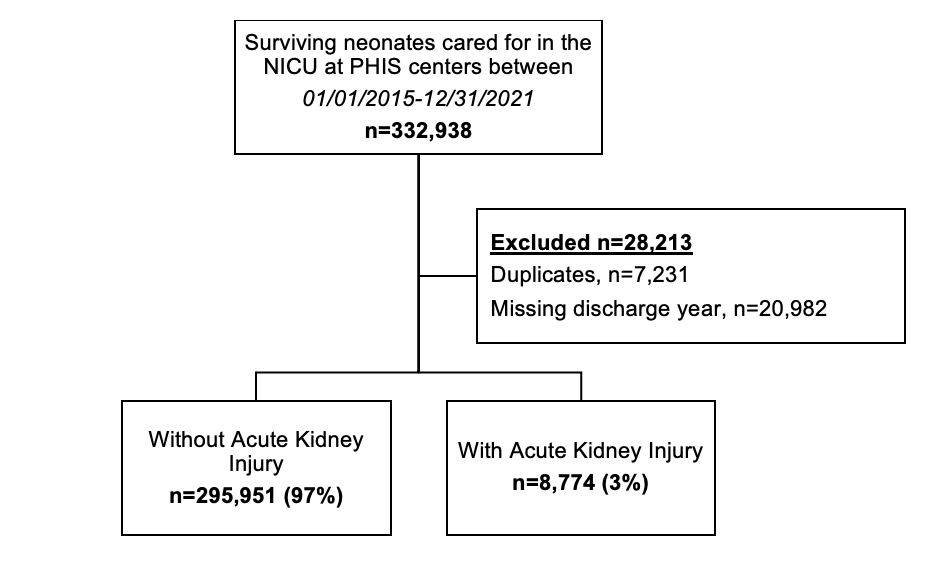Neonatal Nephrology/AKI
Neonatal Nephrology/AKI 2
239 - Hospital Costs Associated with Acute Kidney Injury in the Neonatal Intensive Care Unit: Analysis of Data from the Pediatric Health Information System (PHIS) Database
Publication Number: 239.243
- DS
David Selewski, MD, MSCR
Associated Professor
Medical University of South Carolina
Mount Pleasant, South Carolina, United States
Presenting Author(s)
Background: Between 30-70% of neonates in the neonatal intensive care unit (NICU) develop acute kidney injury (AKI). Despite this high incidence, the economic burden of AKI remains understudied.
Objective: We aimed to compare estimated costs of hospitalization between neonates in the NICU who did and did not develop AKI and identify predictors of AKI-associated costs. We hypothesized neonates with AKI would amass significantly more costs than those without AKI, and these increased costs would be driven by premature birth, length of hospitalization (LOH), and renal replacement therapy (RRT) receipt.
Design/Methods:
Using data from the Children’s Hospital Association’s Pediatric Health Information System (PHIS) database, we conducted a retrospective cohort study of neonates in the NICU during 2015-2021.
Baseline and demographic data were compared between those with and without AKI using Wilcoxon-Mann Whitney and Chi-squared tests. The adjusted, marginal total cost of hospitalization was estimated using a gamma-distributed log-transformed link function generalized linear model. Costs were inflation-adjusted to March 2022 $USD using the Consumer Price Index. The final model was adjusted for potential biasing factors- including race, ethnicity, gestational age (GA), Feudtner pediatric complex chronic conditions classification (CCC) status, and RRT. Multiple imputation by chained equations was employed for missing data (GA).
Results:
Data from 304,725 neonates, 8,774 (3%) with AKI and 295,951 (97%) without AKI, were included (Figure). Significant differences were found in every demographic/baseline characteristic between those with and without AKI; neonates with AKI were primarily male, non-Hispanic Caucasian, and most frequently >2,500 grams and >38 weeks GA at birth (Table 1). Neonates with AKI required more RRT than those without AKI (2.8% vs. 0.1%; p< 0.01) and had more CCC’s (2.9±1.9 vs. 0.9±1.4; p< 0.01).
Neonates with AKI had, on average, $41,699 greater costs than those without AKI after adjusting for predictors (Table 2). Significant predictors of costs included LOH, Feudtner CCC’s, GA, RRT, race, and ethnicity (all p< 0.01).
Conclusion(s): In this analysis of the economic burden of AKI in the NICU, AKI is independently associated with increased hospital costs. Key drivers of costs of hospitalization among those who developed AKI included (in order of importance): LOH, Fedutner CCC’s, GA, RRT, race and ethnicity. Knowledge of these drivers can help in identifying high-value practices for cost mitigation strategies. 
.png)
.png)
